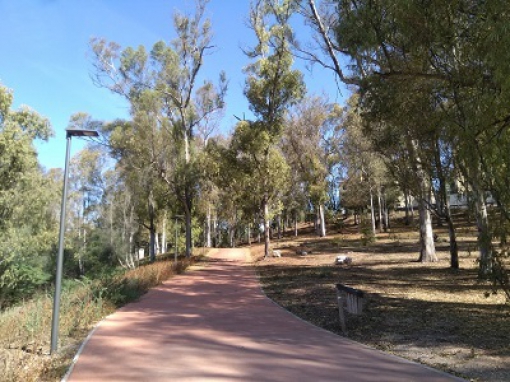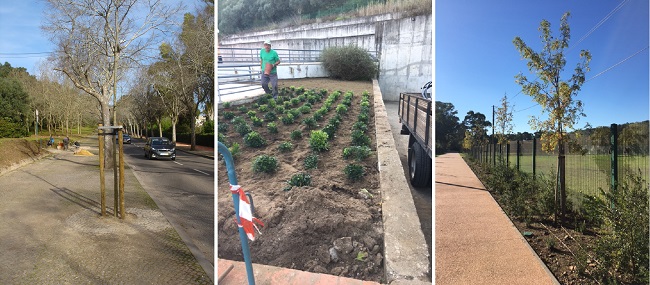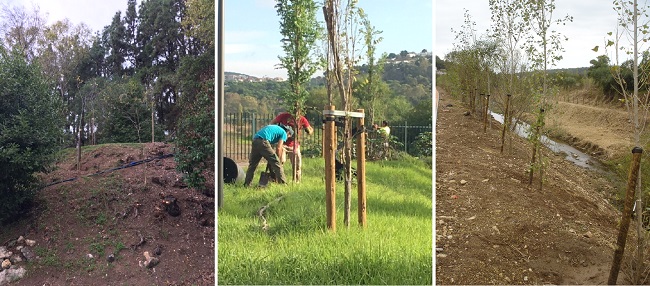STRATEGY FOR THE ARBOREAL HERITAGE OF THE CDNJ

The Centro Desportivo Nacional do Jamor (CDNJ) attaches particular importance to the preservation of its arboreal patrimony. It is important to inform about the strategy that we implement for this purpose.
The CDNJ is a large urban park with an area of about 200 hectares, which includes 94 hectares of forest area and 40 hectares of green and framing spaces, these two areas presenting an arboreal and natural heritage, continuous and considerable in the municipality of Oeiras, which we all want to see preserved and valued.
These areas constitute a set of green areas for recreation and leisure and also for framing and protecting the sports infrastructure that exist in this complex, the result of a legacy of previous institutions and the investment of the IPDJ-CDNJ in the quality of this space over the years, there has always been a concern to reconcile existing infrastructure and sports activities with free and more naturalized spaces.

In this perspective, there has been a growing investment, both in terms of arboreal heritage, and in the requalification of outdoor spaces and green spaces in the CDNJ, resulting, in recent years, in a significant increase in the number of trees and shrubs planted in these areas.
For this, strategic plans were developed and implemented, such as the CDNJ Forest Management Plan, which aims to implement concrete measures for the management and preservation of the CDNJ forest area and the Plan for the implementation of the CDNJ's network of accessible paths, accompanied by of arboreal green corridors, which have been implemented in phases, including the Green and Blue Axis.

This, in addition to creating a pedestrian and cycle path along the River Jamor, also aimed to requalify the banks and increase the biodiversity of the River Jamor, through the planting of various trees and shrubs along the banks.
Alongside the management of the arboreal heritage and the creation of a network of accessible paths, it should also be noted that the management of water resources in the irrigation of green spaces was also the object of a management plan, which translates into options to reduce costs of water. In this way, since 2010 the choice has been made to transform many of the existing grassed areas, which are not justified, either by their small size or by the lack of functionality, into dry meadow areas or areas of shrub planting and arboreal, investing in the creation of green areas with greater diversity, and with less irrigation and maintenance requirements.

In addition to the planting of new trees and the requalification of some green areas, the identification and assessment of risk and conflict situations is also carried out, where it is sometimes necessary to remove unsafe specimens, namely trees with a steeply sloping trunk and close to buildings, sports equipment, paths and lanes, trees with little vitality or that are located in areas that damage pavements and infrastructure or conflict with accessibility, not allowing sufficient support for the root development of the specimens to be guaranteed.
The removal of trees is also necessary when trees die, either from natural causes and their aging, or from attacks by pests and diseases, such as palm trees, which in recent years have become removed due to attack by the palm weevil and/or rotting situations, recorded regularly in the maintenance reports.

These situations need to be changed and resolved, with the aim of increasing the safety, quality and functionality of existing spaces and infrastructure, with their removal being successful by planting a new species more suited to the location, or whenever possible, doubling the number of specimens to be planted.
We present below the actions and interventions that the CDNJ has been developing in the last 10 years and also those in progress or that are planned, which includes the planting of arboreal and shrubby specimens in forest areas and green spaces for intensive recreation:
- Actions / Interventions performed
- Actions/Works in progress
- Actions / Planned Works
- Actions / Interventions performed - summary table (in Portuguese only)
Please note that the CDNJ is available for any further clarification, for that you should send your request to reservas.jamor@ipdj.pt
11-11-2021